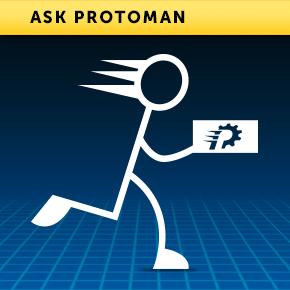Selecting a finishing technique, just like selecting an additive manufacturing or 3D printing process, should be based on what the end-use goals for the part are going to be.
 Not all finishing options are available for all rapid prototyping techniques, so process and finish selection should be two parts of the same decision-making process. Figuring out the best finish for your job can actually influence which process you finally select. Finishing also adds both time and cost to a project, so balancing the ideal vision with the budget and deadline is an essential step.
Not all finishing options are available for all rapid prototyping techniques, so process and finish selection should be two parts of the same decision-making process. Figuring out the best finish for your job can actually influence which process you finally select. Finishing also adds both time and cost to a project, so balancing the ideal vision with the budget and deadline is an essential step.
What are your options?
Natural and Standard finishes are the most commonly used, and both deliver a good representation of a part or prototype quickly and cost efficiently.
Primed, Presentation and Clear finishes are primarily used for creating a more polished look that better represents the aesthetics of a production part.
For parts that may be interacting with other components in a test-case situation, Standard Plus Exterior (Std + Ext) and Standard Plus All (Std + All) will most likely be required. These finishes provide an extra smooth surface area through sanding and the removal of build lines and stair stepping that could affect how parts move together. For a list of finishing options and a detailed description of best use cases, visit our Post-Processing and Final Levels page.
What is your process?
Stereolithography (SLA) offers the widest range of finishing techniques – by far. The number and variety of materials available for SLA also allows for the creation of cosmetically superior pieces; SLA parts sand easily and accept paint nicely. For customers doing a display or prototyping project where looks are of the highest priority, SLA is usually one of the top choices. Clear options and a finish specifically certified for the medical industry are only available with SLA.
PolyJet 3D printing, Fused Deposition Modeling (FDM) and Selective Laser Sintering (SLS) have fewer finishing options available, but result in more resilient final products. While PolyJet offers fewer post-build finishing options, the full-spectrum range of colors available means less finishing may be required. Likewise, if the part is going to see some abuse and won’t really require a Presentation finish, FDM and SLS deliver durability.
What is your budget and deadline?
Rapid prototyping is always an exercise in give and take. Although vision might narrow down the appropriate finishing options, budget and deadline will most likely have the final say. Cost will depend on part geometry, size, and how complex the finishing process is. The longer the finishing takes, the more costly it is; time and cost will often track together. Selecting a finish beyond Natural can typically tack an extra day onto a small part. For a larger project, finishing can occasionally add as much as an extra week. If you are on a tight budget or time constraints, you may want to skip the higher finish levels.
If you’re not sure what finish will meet your unique requirements, ProtoCAM engineers are always available to review your project and present the options that might work best. Get a quote now.
